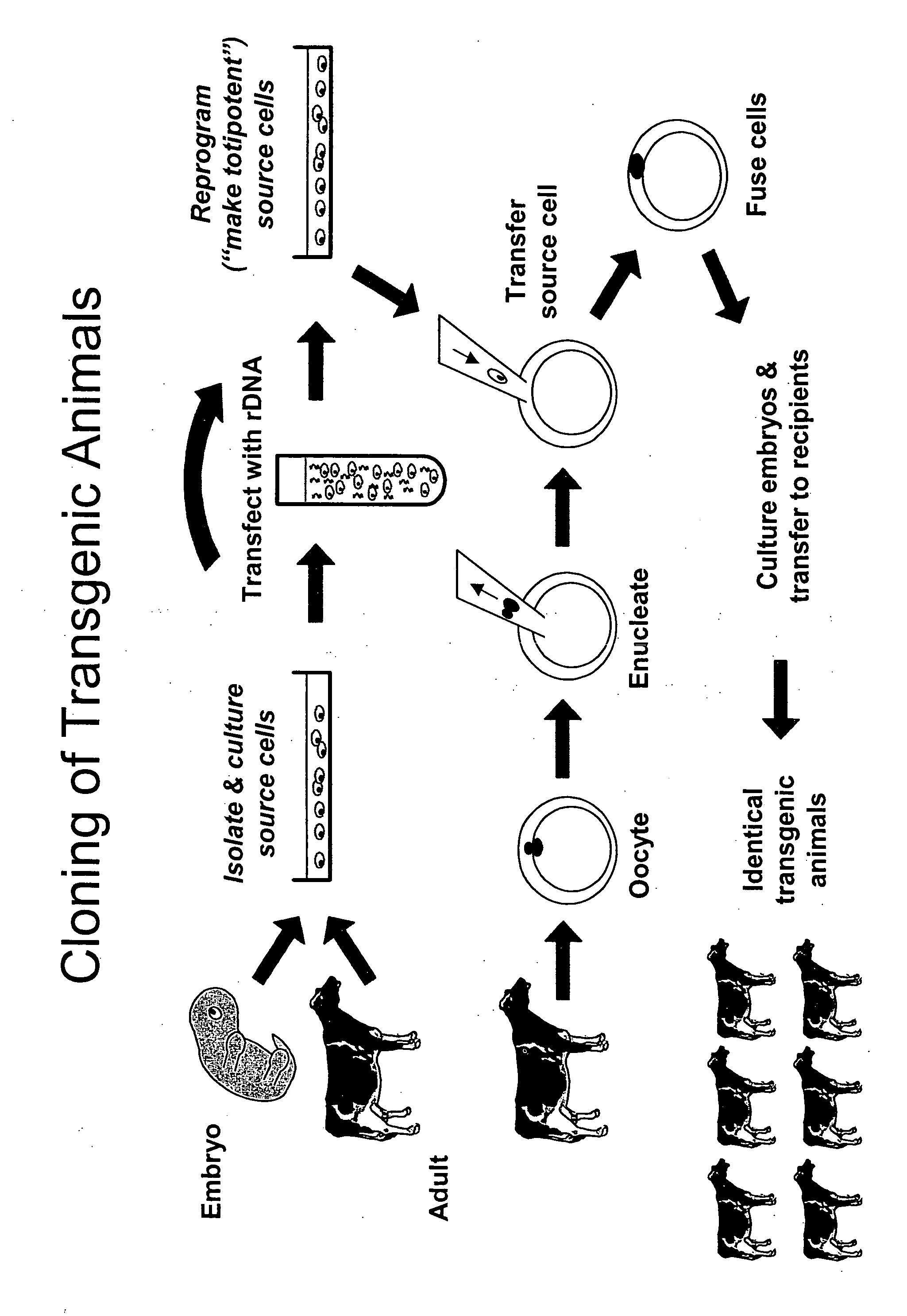Method and system for fusion and activation following nuclear transfer in reconstructed embryos
a nuclear transfer and embryo technology, applied in the field of fusion and activation of reconstructed embryos, can solve the problems of inefficiency, time-consuming, costly and unreliable processes, and inability to allow a specific animal line to produce gene products, and achieve the effect of avoiding immunological rejection and increasing the availability of cicm cells
- Summary
- Abstract
- Description
- Claims
- Application Information
AI Technical Summary
Benefits of technology
Problems solved by technology
Method used
Image
Examples
Embodiment Construction
[0015] The following abbreviations have designated meanings in the specification:
[0016] Abbreviation Key: [0017] Somatic Cell Nuclear Transfer (SCNT) [0018] Cultured Inner Cell Mass Cells (CICM) [0019] Nuclear Transfer (NT) [0020] Synthetic Oviductal Fluid (SOF) [0021] Fetal Bovine Serum (FBS) [0022] Polymerase Chain Reaction (PCR) [0023] Bovine Serum Albumin (BSA)
[0024] Explanation of Terms: [0025] Caprine—Of or relating to various species of goats. [0026] Reconstructed Embryo—A reconstructed embryo is an oocyte that has had its genetic material removed through an enucleation procedure. It has been “reconstructed” through the placement of genetic material of an adult or fetal somatic cell into the oocyte following a fusion event. [0027] Fusion Slide—A glass slide for parallel electrodes that are placed a fixed distance apart. Cell couplets are placed between the electrodes to receive an electrical current for fusion and activation. [0028] Cell Couplet—An enucleated oocyte and a s...
PUM
| Property | Measurement | Unit |
|---|---|---|
| concentration | aaaaa | aaaaa |
| concentration | aaaaa | aaaaa |
| time | aaaaa | aaaaa |
Abstract
Description
Claims
Application Information
 Login to View More
Login to View More - R&D
- Intellectual Property
- Life Sciences
- Materials
- Tech Scout
- Unparalleled Data Quality
- Higher Quality Content
- 60% Fewer Hallucinations
Browse by: Latest US Patents, China's latest patents, Technical Efficacy Thesaurus, Application Domain, Technology Topic, Popular Technical Reports.
© 2025 PatSnap. All rights reserved.Legal|Privacy policy|Modern Slavery Act Transparency Statement|Sitemap|About US| Contact US: help@patsnap.com

